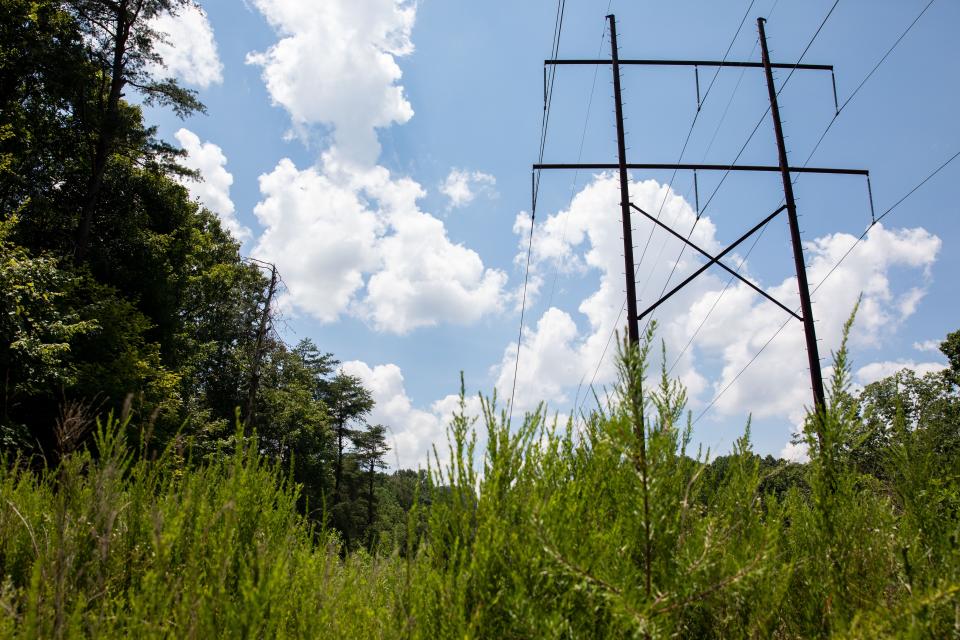Keep it in the Ground! How you can Support Bernheim Forest: Opinion
Throughout my upbringing in public schools, I was continually drilled from the 1st grade to my senior year to know the different genres of conflict that happens in stories: Man vs. Machine, Man vs. Man, Man vs. society and of course: Man vs. Nature. Overall, not much has changed in this regard. Although nature may poison an unlucky hiker at times or take a few of our beloved citizens in catastrophic and traumatic climate events, “man” and the world at large need to learn to pick fights they can win. Nature is something to work alongside of. She can never truly be tamed.
A great example of this is just a short drive from our compassionate city. Bernheim forest, home to many lush and verdant strips of prairie encourages colorful butterflies and quaint white tailed deer to roam free. Forest openings like these are a great indicator of a forest’s health. Interestingly enough, forest openings can be both manmade or naturally developed, depending upon circumstance. What does stay constant however, is the fact that every forest opening benefits herbaceous communities of endangered plants like Fraxinus americana, or the White Ash tree. The animals that accompany them and the vegetation surrounding them also thrive here!
More:Proposed LG&E natural gas pipeline that would cut through Bernheim forest put on hold

The University of Kentucky’s Department of Forestry study on soil conditions adds nuance to the question of just where the line is between a forest and it’s opening-home to many herbaceous communities- lie.
In knowing that “soil processes… will shift with species composition and litter inputs across the forest to grassland ecotone”, we can confidently state that what was once seen as a clear-cut boundary should now be thought of less as two separate entities, and more as two integral but separate parts working together for the overall health of one ecosystem.
The Forestry Department’s efforts in better understanding Bernheim Forest’s ecotones is a great lesson in stewarding the land Bernheim currently occupies and advocates for.
By definition, a steward is “a person who manages another's property or financial affairs; one who administers anything as the agent of another or others.” This definition of stewardship, possibly off-putting for those of us who see nature as something we are still a part of today, reflects a more Western view of the world.
Sisseton Wahpeton Sioux Tribe member Ruth H. Hopkins speaks on a more Native way of knowing on this topic, stating that: “We aren't above anything.” “We aren't stewards of the land, we are the land”. This contrast in thinking highlights not only differences in attitude, but lifestyles between those who wish to coexist with nature, and those who wish to control it.
Like the forest opening’s soil conditions, Hopkin’s statement applied to Bernheim Forest’s different ecotones affect on each other quickly becomes a pressing question that concerns our very relationship with nature and green spaces as a society.
More:January 2023 events calendar: 30+ things to do in Louisville this month
After all, what good is the most impressive scientific study regarding forestry to people in Louisville that do not even have the time or means visit Bernheim in the first place?
Not many in Louisville understand this better than KSEC. In addition to increasing the overall holistic and intersectional understanding of environmental justice for youth, KSEC, or the Kentucky Student Environmental Coalition believe in “an environmentally sustainable, socially just, and economically vibrant Kentucky for the well-being of ourselves and future generations”.
They have shown this through their incredible work that brings communities across our state together, like their iconic and ongoing “No New Pipelines” campaign. Resisting LG&E’s ongoing attempt at building a natural gas pipeline on Bernheim land, KSEC and Bernheim Forest are a powerful example of important and work that moves us as a society closer to the ongoing and international struggle that is climate justice, and the empowerment of our most affected citizens.
Due to LG&E’s insistence to continue their violent land grab, both Cedar Creek and Bernheim’s Cedar Creek Wildlife Corridor are at risk if the natural gas pipeline would burst. The former being one of the cleanest rivers to run through Louisville, and the latter a state held conservations easement made to protect our incredibly delicate and finite natural environments, LG&E’s flagrant disregard for the sanctity of natural environments and the endangered species that make them up should not be shrugged off as happenstance, but a declaration of what they value as a company.
You can help advocate for Bernheim, and KSEC’s ongoing fight to center our natural environment and communities’ wellbeing this Tuesday at the condemnation case between LG&E and Bernheim Forest at 9 AM on Tuesday, January 10th at the Bullitt County Circuit Court on Frank E Simon Ave, Sherpardsville Kentucky.
By packing this hearing with people that understand the unnecessary danger this pipeline brings, we can help support KSEC’s efforts in advocating for the preservation of Bernheim’s natural beauty, over LG&E’s enacting of their skewed values.

Isaac Mackin is a Senior Professional Writing Major and Pan African Studies Minor at the University of Louisville. Isaac uses they/them pronouns and believes in a future in which racial and climate justice are centered before the flow of capital.
This article originally appeared on Louisville Courier Journal: No New Pipelines! Why we must keep LG&E out of Berniheim forest

